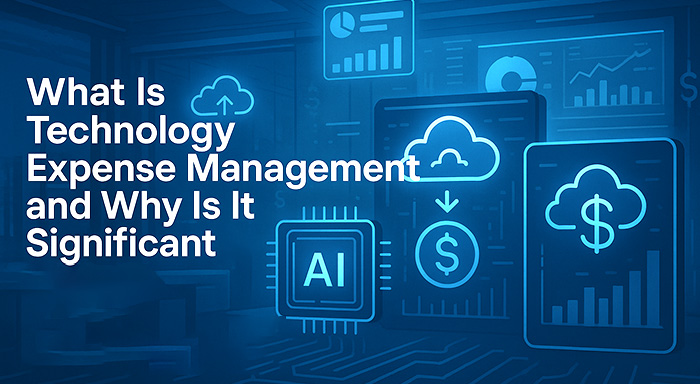Most people only think of hospitals and private practices in relation to the healthcare industry. However, the healthcare industry encompasses all parties involved in providing and coordinating medical-related goods and services.
Stakeholders in the healthcare industry include drug and medical equipment manufacturers, medical insurers, doctors, nurses, and researchers. Moreover, they must collaborate seamlessly to improve each patient's overall quality of care.
Information technology plays a pivotal role in facilitating this collaboration. Consequently, the Health Information Technology for Economic Clinical Health (HITECH) Act of 2009 incentivizes IT adaptation in healthcare. Below are the crucial roles IT plays in the healthcare industry.
Patient Records Maintenance And Retrieval
Patient medical medicals are crucial to quality healthcare because they give insight into a patient’s medical history. Such records help the attending physician and subsequent caregivers understand the basis for a given line of investigation before diagnosing and recommending treatment. Therefore, efficient patient record storage and retrieval directly impact healthcare quality.
Second, more patients are incorporating complementary and alternative medicine into their treatment regimens. For example, medical marijuana products like CBD cigarettes, and CBD Gummies. Click, to know more read about cbd cigarettes & safety. CBD gummies are popular ancillary therapy for various health conditions; some doctors recommend CBD for their patients, though they cannot legally prescribe it. While CBD is relatively safe, information on the patient’s CBD intake and medical marijuana card information is vital for subsequent caregivers.
Third, patients have a legal right to privacy, and healthcare industry stakeholders are responsible for protecting patient records from unauthorized access. Consequently, the Health Insurance Portability and Accountability Act (HIPAA) compliance regulations include a three-tier security system for patient records.
The recommended security system covers administrative, physical, and technical safeguards. Information technology software like firewalls and passwords helps execute administrative and technical safeguards.
Information technology systems adopted for use in the healthcare system, like Electronic Health Record (EHR) systems, store all administrative and clinical information for each patient. EHR systems eliminate paperwork and physical storage and enhance patient record legibility, reducing interpretation errors. According to one government report, 94% of hospitals in the US use EHR systems to monitor hospital performance, implement improvements, and monitor patient safety.
Image Source: Unsplash.com
Clinical Data Networks
Clinical networks are integral research tools that enable healthcare CRM professionals and partner organizations to collaborate on healthcare quality improvement programs. Such networks collect health-related data, including disease registries, health determinants, and health measures.
Determinants of health are non-medical health factors that influence health outcomes in individuals or populations. They include economic capacity, socio-cultural environments, lifestyle choices, personal characteristics, and the physical environment. On the other hand, health measures include disease biomarkers, case mortality rates, and case fatality rates that give insights into disease prevalence.
Clinical data networks are portals that store data collected from clinical research. One literature review defines clinical research as collecting data from people, surveys, tissue samples, and animal models to understand disease pathogenesis.
The findings from the collected data are also helpful in evaluating therapeutic, surgical, and behavioral interventions. New knowledge from such evaluations helps improve the processes of care and patient outcomes by determining the most effective and comprehensive advances in patient care.
Information technology is the driving force behind clinical data networks because it centralizes the new knowledge from clinical research, making it available to stakeholders in different institutions and geographical regions. Clinical data networks include hospitals, federal government agencies in charge of healthcare, research institutions, medical schools, and state-based medical information exchanges. Each party can upload or access research data and case studies from the network.
Image Source: Pixabay.com
Healthcare Data Analytics
Besides clinical data networks, data collection and analysis is vital in many other health sectors. Therefore, data analysis is necessary to execute administrative tasks, including hiring and placement decisions, efficient management, identifying areas of training, budget allocations, and enhancing patient experiences.
Moreover, healthcare data analytics helps predict medical trends, including possible disease outbreaks, improve healthcare reach, manage disease spread, and detect anomalies in scans. Information technology analytics systems comb through large volumes of complex health-related data to guide stakeholders in making data-driven decisions for better healthcare.
Task Automation
A healthcare worker’s primary duty is patient care; however, health workers perform mundane tasks besides patient care. Such tasks include scheduling patient appointments and sending appointment reminders, insurance pre-authorization, claims, and billing, handling follow-ups and referrals, managing prescriptions and refills, and updating patient records.
However, information technology includes systems and software that can automate the highlighted administrative tasks. Task automation in healthcare systems facilitates task prioritization, redefines workflows to improve efficiency, and improves patient satisfaction. For example, healthcare credentialing software ensures that staff credentials are always updated and compliant by automating expiration reminders, attaching necessary links and documents, and allowing staff to self-onboard and update their information. Automated IT systems work in the background without human intervention (including initiation) to save time while ensuring adherence to industry best practices.
Image Source: Unsplash.com
Digital Health
Virtual care/ telehealth utilizes communication and data transfer systems like telephones and text-based messaging to offer remote healthcare to patients outside health facilities. One survey shows that 37% of US adults used telehealth services in 2021.
Telehealth and virtual care provide a convenient and comfortable healthcare option, especially for patients with limited mobility. Moreover, doctors can assess determinants of health and give more accurate diagnoses. Besides telehealth and virtual care, wearable devices featuring integrated sensors that monitor biomarkers use IT to enhance pre-emptive healthcare measures.
Conclusion:
Information technology adaptation has revolutionized service delivery in multiple economic sectors, including the healthcare industry. It is invaluable for improving patient care, experience, and overall quality of life.
Related Post:



